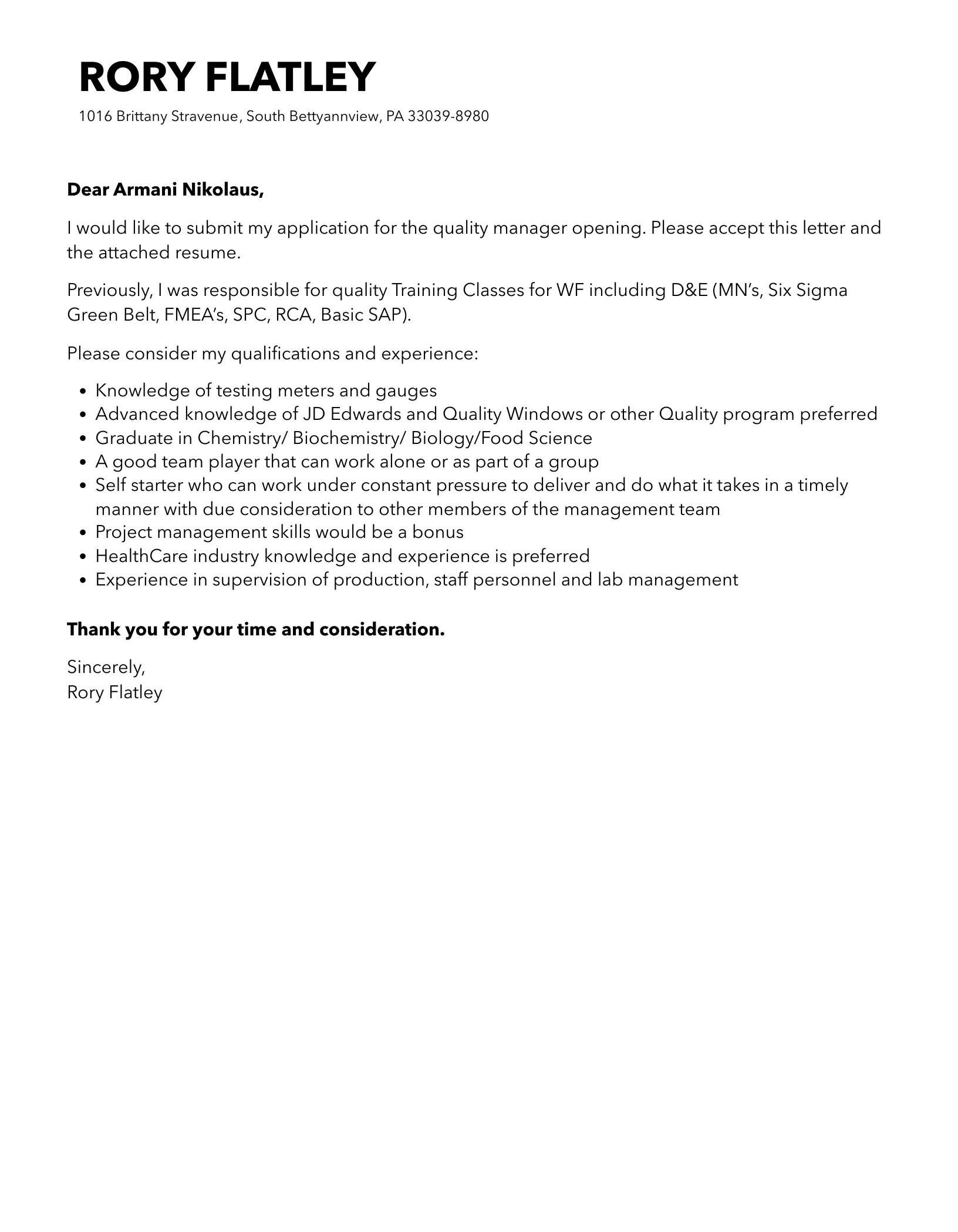Crafting a Quality Manager Cover Letter
A quality manager cover letter is your first opportunity to make a strong impression on a potential employer. It’s a chance to showcase your skills, experience, and passion for quality management. Unlike a resume, a cover letter allows you to tell your story, explain your qualifications in detail, and express your enthusiasm for the specific role and company. It is a critical document in your job search, serving as a gateway to the interview process. Writing a compelling cover letter is an art, requiring careful planning, strong writing skills, and a deep understanding of the quality manager role. The goal is not just to list your qualifications, but to create a narrative that convinces the hiring manager that you are the perfect fit for the position.
Understanding the Quality Manager Role
Before writing your cover letter, you must fully understand the responsibilities and expectations of a quality manager. This includes ensuring that products and services meet quality standards, developing and implementing quality control systems, and leading teams to improve processes. Quality managers often work with cross-functional teams, requiring strong communication, leadership, and problem-solving abilities. They are responsible for analyzing data, identifying areas for improvement, and implementing corrective actions. Understanding the core functions of the job is crucial for tailoring your cover letter and highlighting the most relevant skills and experiences. You should thoroughly review the job description to grasp the specific requirements and align your cover letter accordingly. Highlighting your experience in areas like auditing, process improvement, and regulatory compliance will significantly enhance your application.
Key Skills to Highlight
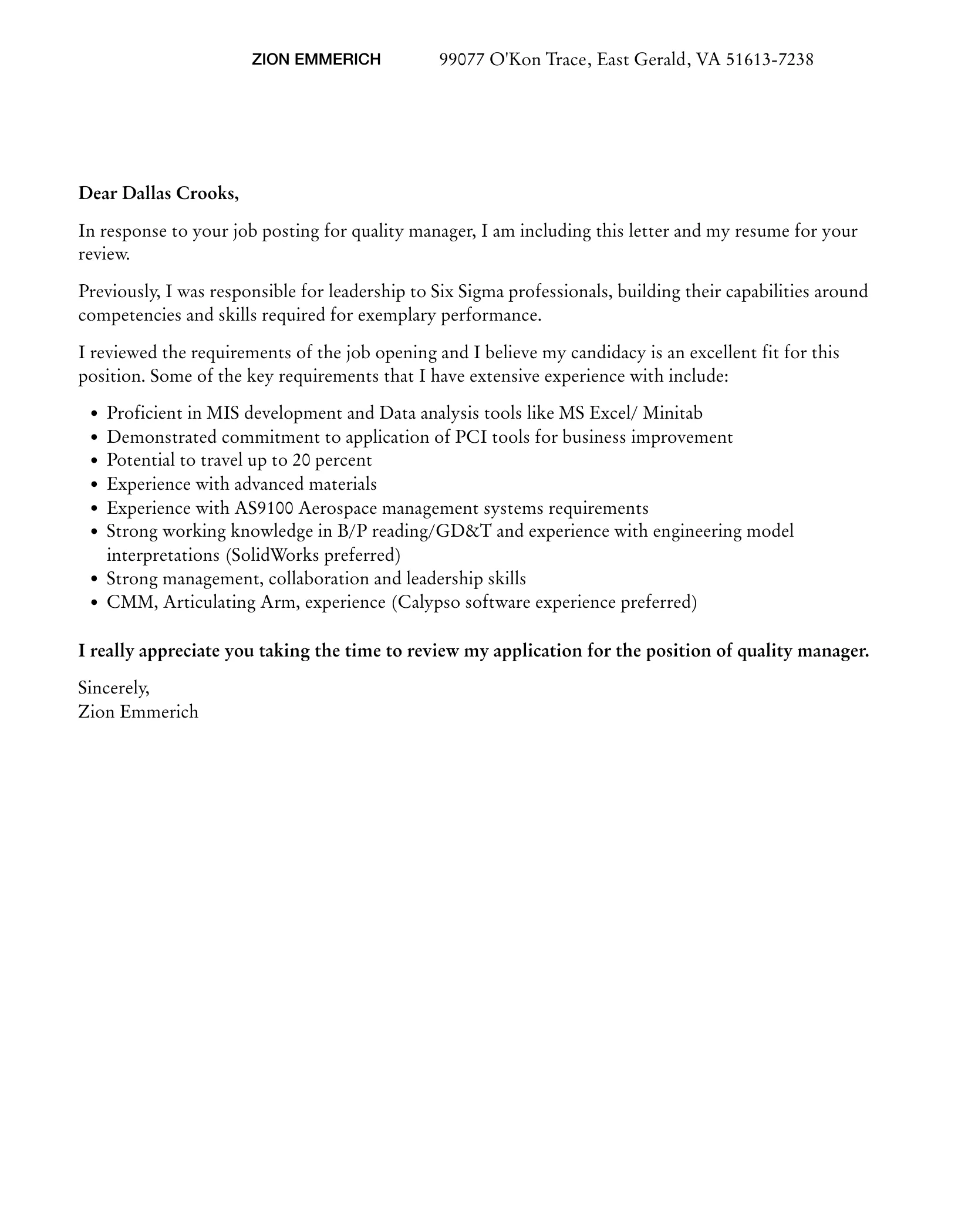
A successful quality manager possesses a blend of technical and soft skills. Your cover letter should emphasize both to demonstrate your holistic capabilities. This section guides you on how to highlight these crucial skills effectively.
Technical Skills
Technical skills are the bedrock of a quality manager’s expertise. These skills allow you to analyze data, identify issues, and implement effective solutions. In your cover letter, you should highlight your proficiency in key areas. Demonstrate your knowledge of quality management methodologies, such as Six Sigma, Lean, and ISO standards. Mention your experience with quality control tools, including statistical process control (SPC), root cause analysis, and failure mode and effects analysis (FMEA). Any certifications or training you possess, such as Certified Quality Manager (CQM), should be explicitly stated. Additionally, highlight your experience with quality management software and systems. Tailor the technical skills you mention to match the job description. Show you understand the specific tools and methodologies preferred by the company.
Soft Skills
Soft skills are equally important for a quality manager. These skills enable you to communicate effectively, lead teams, and foster a culture of continuous improvement. In your cover letter, emphasize your leadership abilities, highlighting instances where you’ve led quality initiatives or managed teams. Strong communication skills are essential for conveying complex information clearly and concisely. Demonstrate your ability to collaborate with cross-functional teams and build consensus. Problem-solving skills are crucial for identifying and resolving quality issues. Highlight your analytical abilities and your approach to tackling challenges. Mention your experience with conflict resolution and your ability to maintain a positive and productive work environment. Showcasing your interpersonal skills will demonstrate that you are not only technically proficient but also a valuable team player.
Highlighting Achievements & Metrics
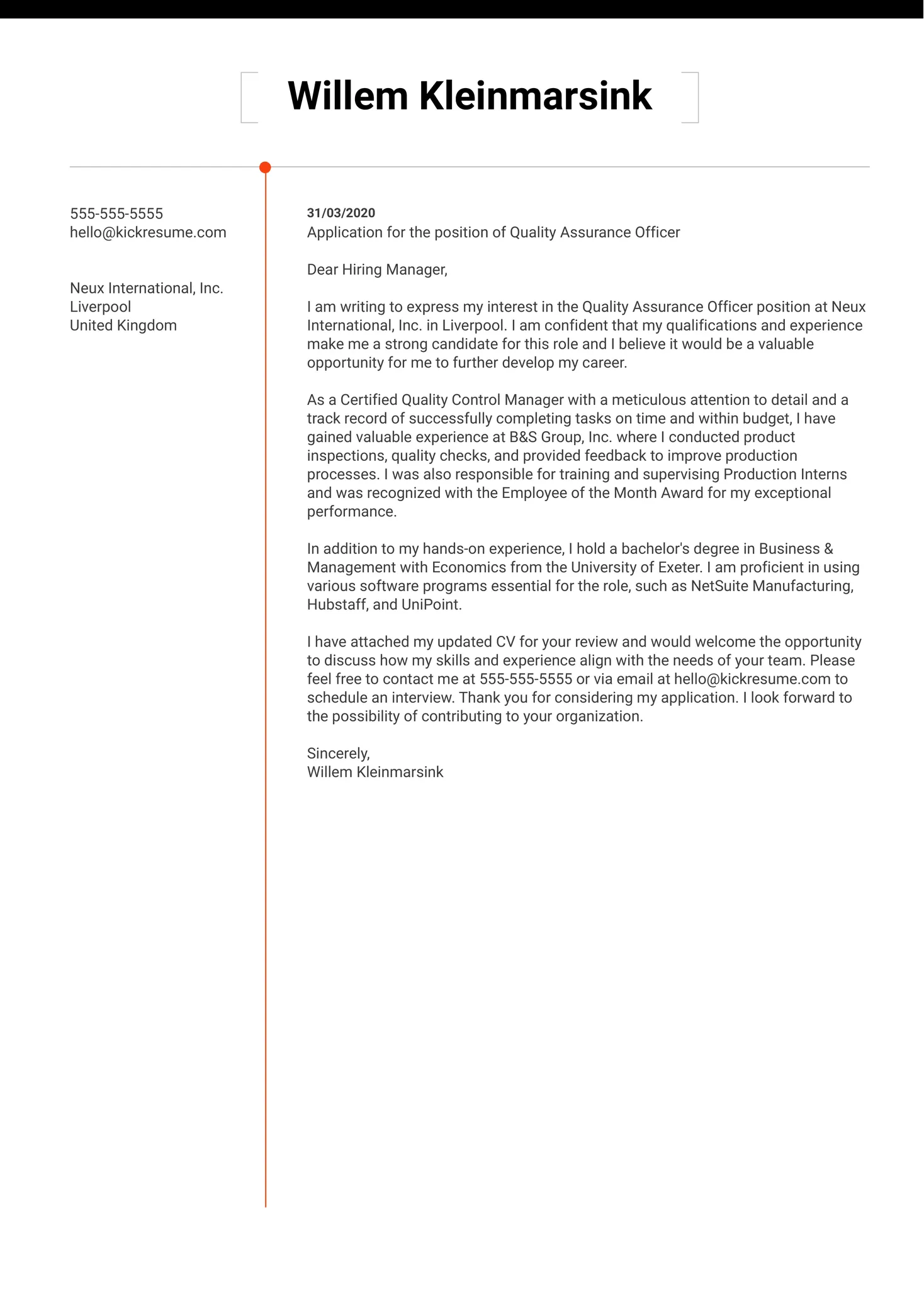
Your cover letter should not only list your skills but also showcase your achievements. Quantifiable results and specific examples will demonstrate the impact you’ve made in previous roles. This section will guide you on how to effectively present your achievements and the metrics that support them.
Quantifiable Results
Use quantifiable results to showcase the impact of your work. Instead of saying you “improved efficiency,” state the percentage by which you improved it. Instead of saying you “reduced errors,” specify the number or percentage decrease. Include metrics such as cost savings, reduction in defects, improvement in customer satisfaction, or faster time-to-market. For example, “Reduced product defects by 15% within one year, resulting in a $50,000 cost savings.” Use metrics to illustrate your ability to achieve tangible results. Whenever possible, use numbers to quantify your achievements, making them more convincing and memorable. This approach highlights your contribution to the company and provides concrete evidence of your success.
Tailoring Your Letter to the Job
A generic cover letter is unlikely to impress a hiring manager. Tailoring your cover letter to each job application is essential to demonstrate your genuine interest and suitability for the role. This section provides strategies for researching the company and matching your skills to their specific requirements.
Researching the Company
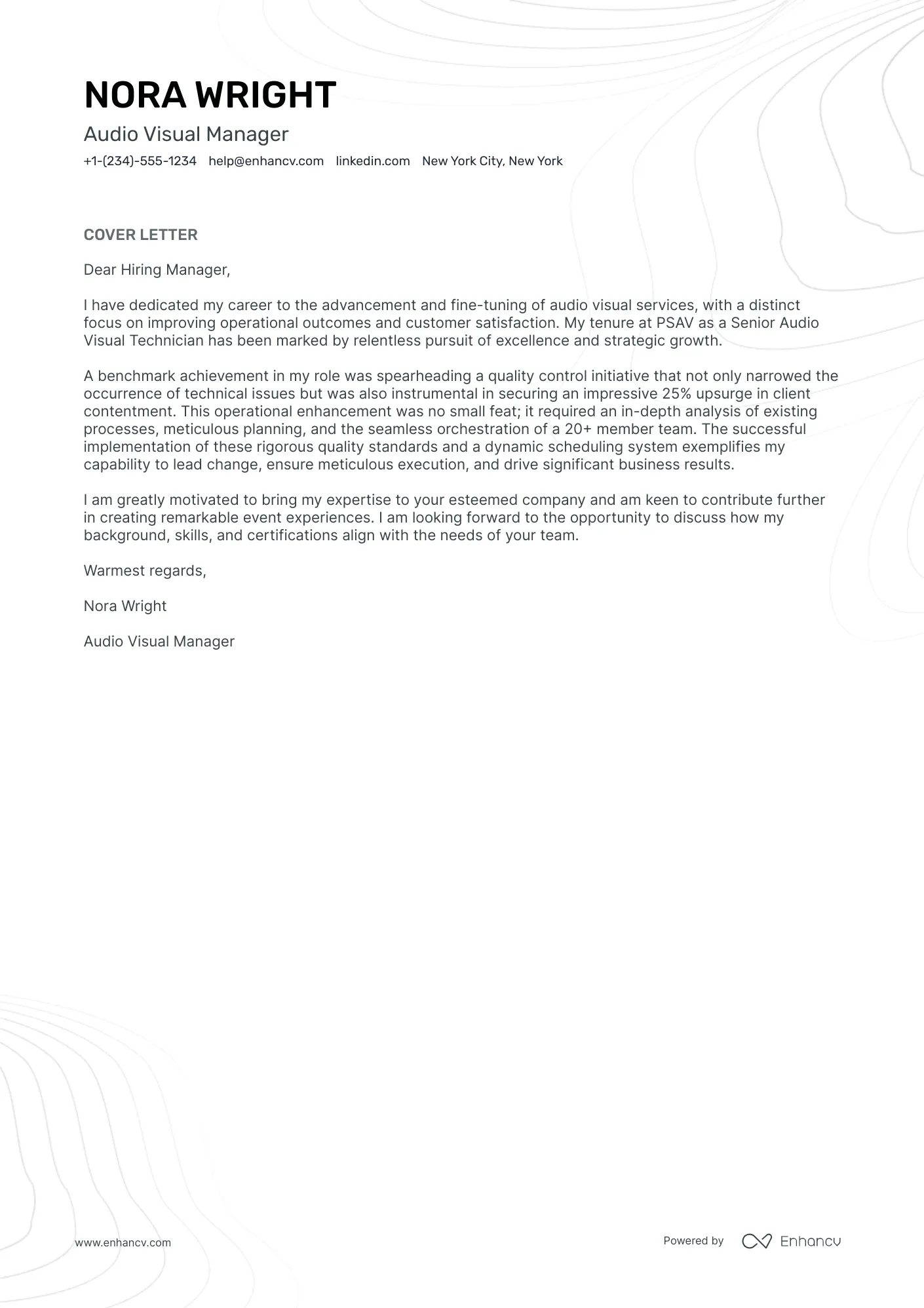
Before writing your cover letter, thoroughly research the company. Understand their mission, values, products, and services. Explore their website, social media profiles, and recent news articles. Understanding the company’s culture and values will help you tailor your letter to align with their specific needs. Use your research to personalize your letter and demonstrate your genuine interest in the company. Show that you understand their challenges and how your skills can contribute to their success. Mentioning specific company initiatives or projects shows that you have taken the time to learn about the organization. This level of detail sets you apart from other applicants and demonstrates your commitment to the role.
Matching Skills to Requirements
Carefully review the job description and identify the key requirements. Highlight the skills and experiences that match those requirements. Use the same keywords and phrases used in the job description to make your application more ATS-friendly. Structure your cover letter to directly address each of the key requirements. Provide specific examples of how you have demonstrated those skills in previous roles. For instance, if the job description emphasizes experience with a specific quality management system, ensure you highlight your expertise with that system. Customize your cover letter for each application, focusing on the skills and experiences most relevant to the specific role. This ensures your cover letter resonates with the hiring manager, increasing your chances of being selected for an interview.
Structuring Your Cover Letter
A well-structured cover letter is easy to read and effectively conveys your qualifications. This section guides you on the essential components of a cover letter and provides tips for creating a professional and impactful document.
The Opening Paragraph
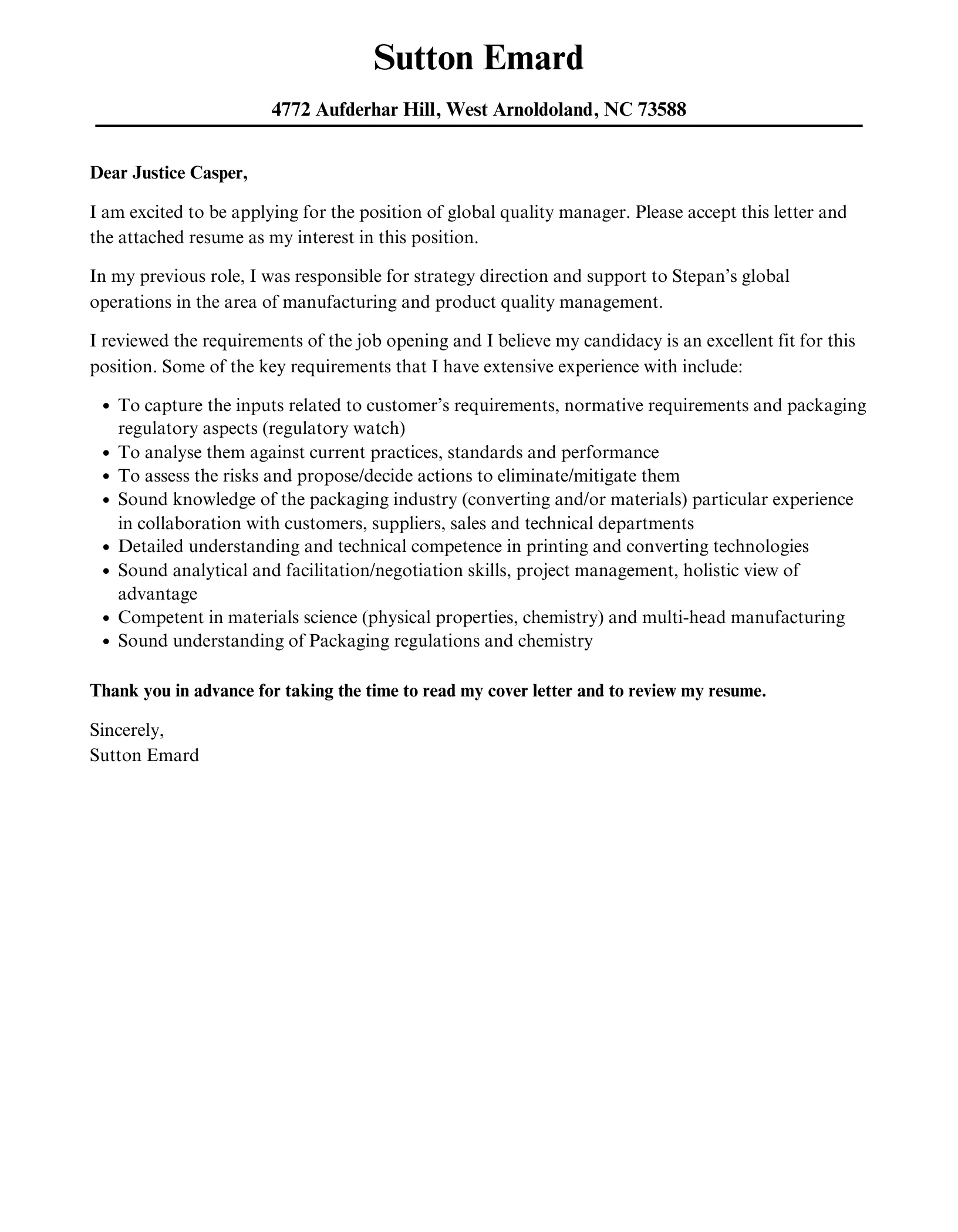
The opening paragraph is your first opportunity to grab the hiring manager’s attention. Start with a strong opening that clearly states the position you are applying for and how you learned about the opportunity. Express your enthusiasm for the role and the company. Highlight one or two key skills or experiences that make you an ideal candidate. Make sure it is concise, and avoid generic opening statements like “I am writing to express my interest…” Instead, write a compelling opening sentence that immediately captures the reader’s interest. For example, “With over five years of experience in quality management and a proven track record of reducing defects, I am excited to apply for the Quality Manager position at [Company Name].” The goal is to create an immediate and positive impression.
Body Paragraphs – Showcasing Experience
The body paragraphs are where you showcase your skills and experience in detail. Use these paragraphs to elaborate on your key accomplishments and how they align with the job requirements. Structure your paragraphs logically, using the STAR method (Situation, Task, Action, Result) to describe your experiences. Start by describing the situation or context, outline the task you were responsible for, explain the actions you took, and clearly state the results achieved. Use specific examples and quantifiable results to illustrate your impact. Focus on showcasing your relevant skills, such as your ability to develop and implement quality control systems, lead teams, and analyze data. Each paragraph should focus on a specific achievement or skill that is directly relevant to the job. The goal is to provide concrete evidence of your qualifications and demonstrate your ability to excel in the role.
Closing with a Strong Call to Action
The closing paragraph should leave a lasting impression and include a strong call to action. Reiterate your interest in the position and express your enthusiasm for the opportunity. Thank the hiring manager for their time and consideration. State your availability for an interview and how they can contact you. Make it clear that you are eager to discuss your qualifications further and that you are looking forward to hearing from them. Avoid clichés and instead use a confident and professional tone. For example, “Thank you for considering my application. I am eager to discuss my qualifications in an interview and can be reached at [phone number] or [email address].” A strong closing ensures the hiring manager remembers you and encourages them to move forward with your application.
Proofreading and Formatting Tips
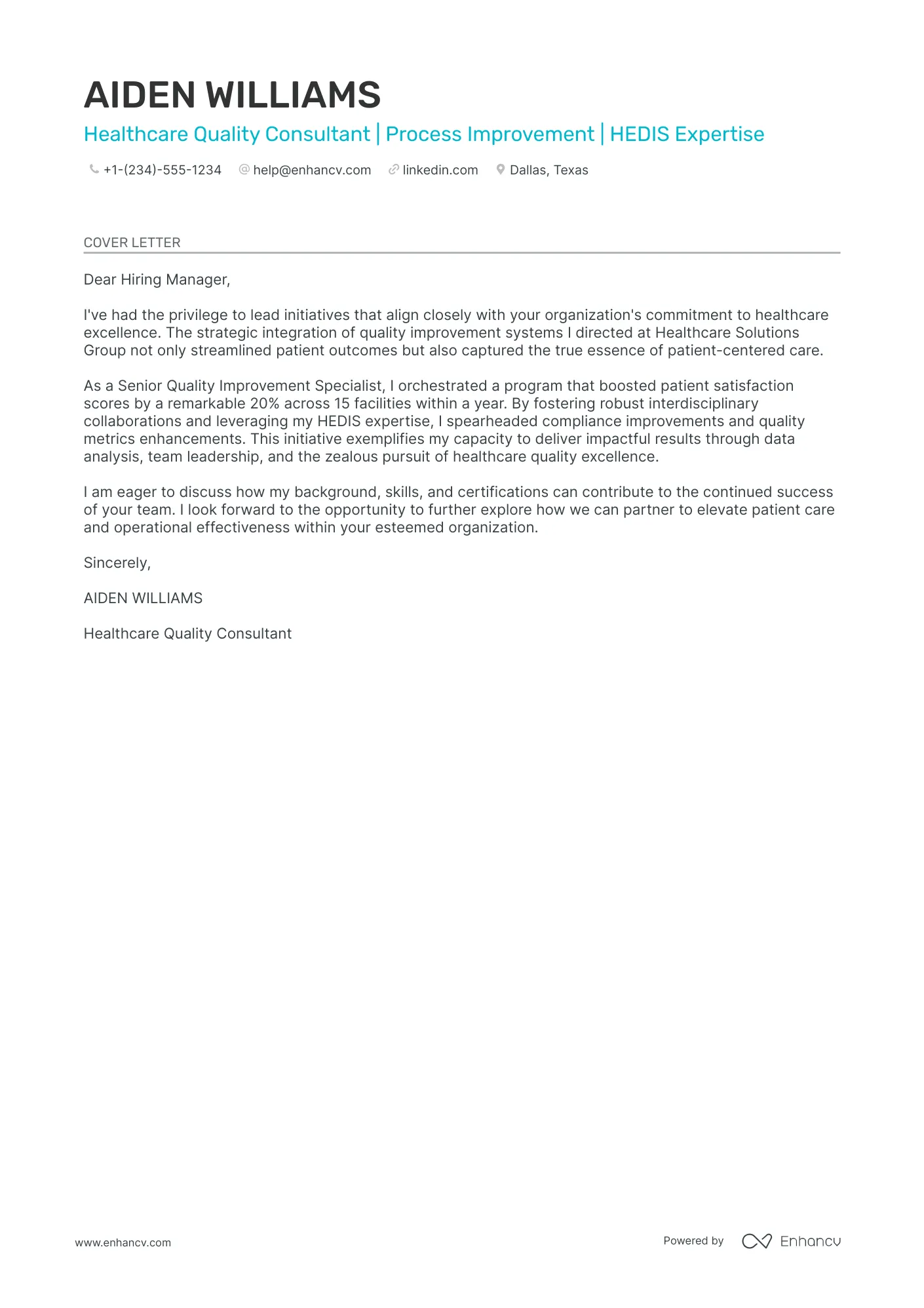
Attention to detail is critical for a quality manager, and your cover letter should reflect this. Proofreading and formatting are essential to create a polished and professional document. This section provides tips for ensuring your cover letter is error-free and well-presented.
- Proofread carefully for any grammatical errors, spelling mistakes, and typos.
- Ask someone else to review your cover letter to catch any errors you may have missed.
- Use a professional and easy-to-read font, such as Arial, Calibri, or Times New Roman.
- Use a consistent font size and style throughout the document.
- Maintain a professional and formal tone throughout the cover letter.
- Ensure proper formatting, including margins, spacing, and alignment.
- Keep the cover letter concise, ideally within one page.
- Use a clear and organized layout to make the letter easy to read.
- Ensure your contact information is accurate and up-to-date.
By following these tips, you can create a compelling cover letter that effectively showcases your skills, experience, and enthusiasm for the role of a quality manager. Remember to tailor your letter to each job application and proofread carefully. A well-crafted cover letter is a key to securing an interview and landing your dream job.
